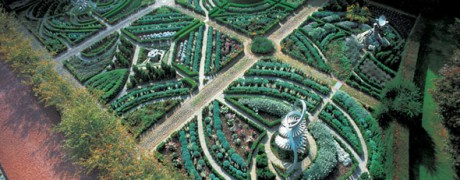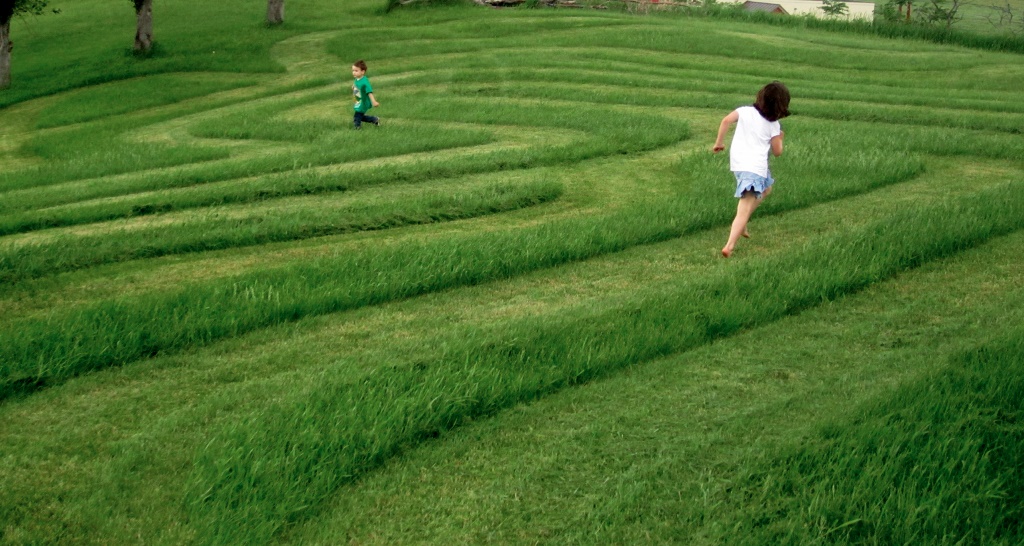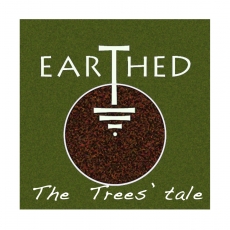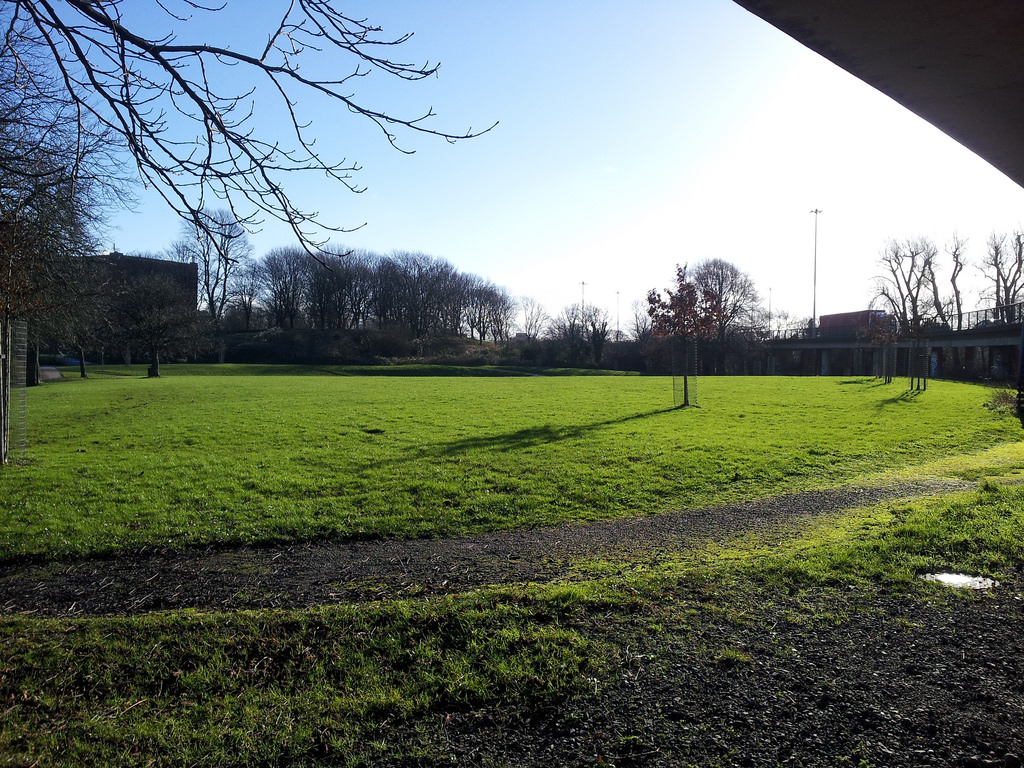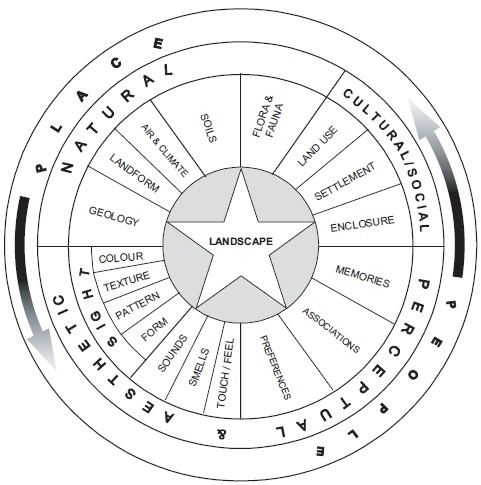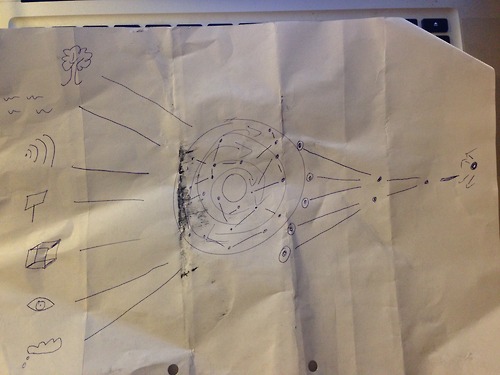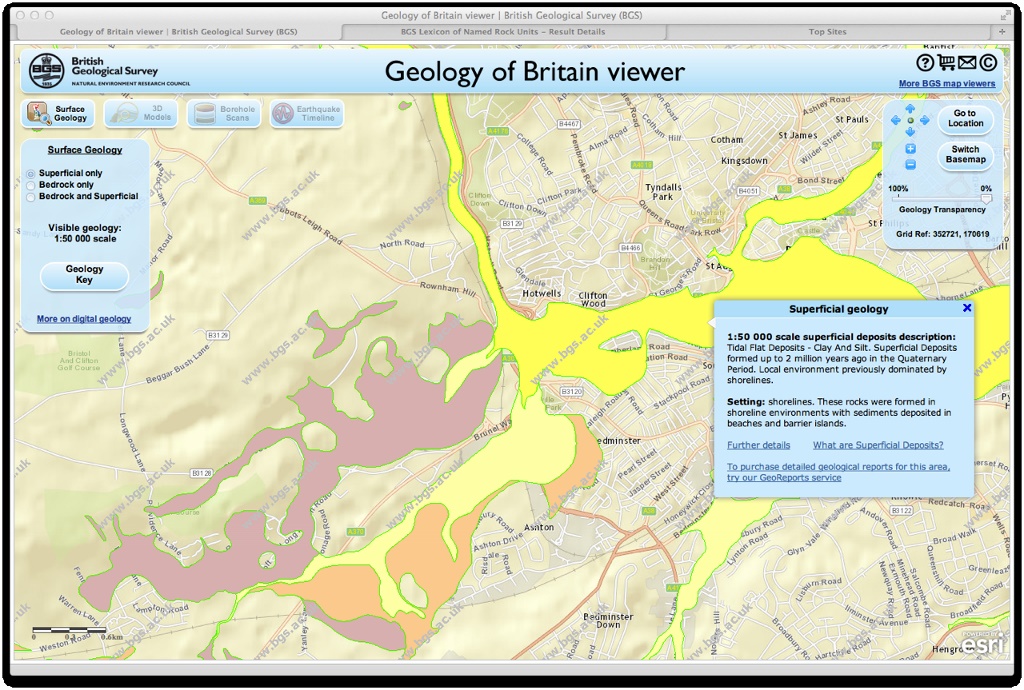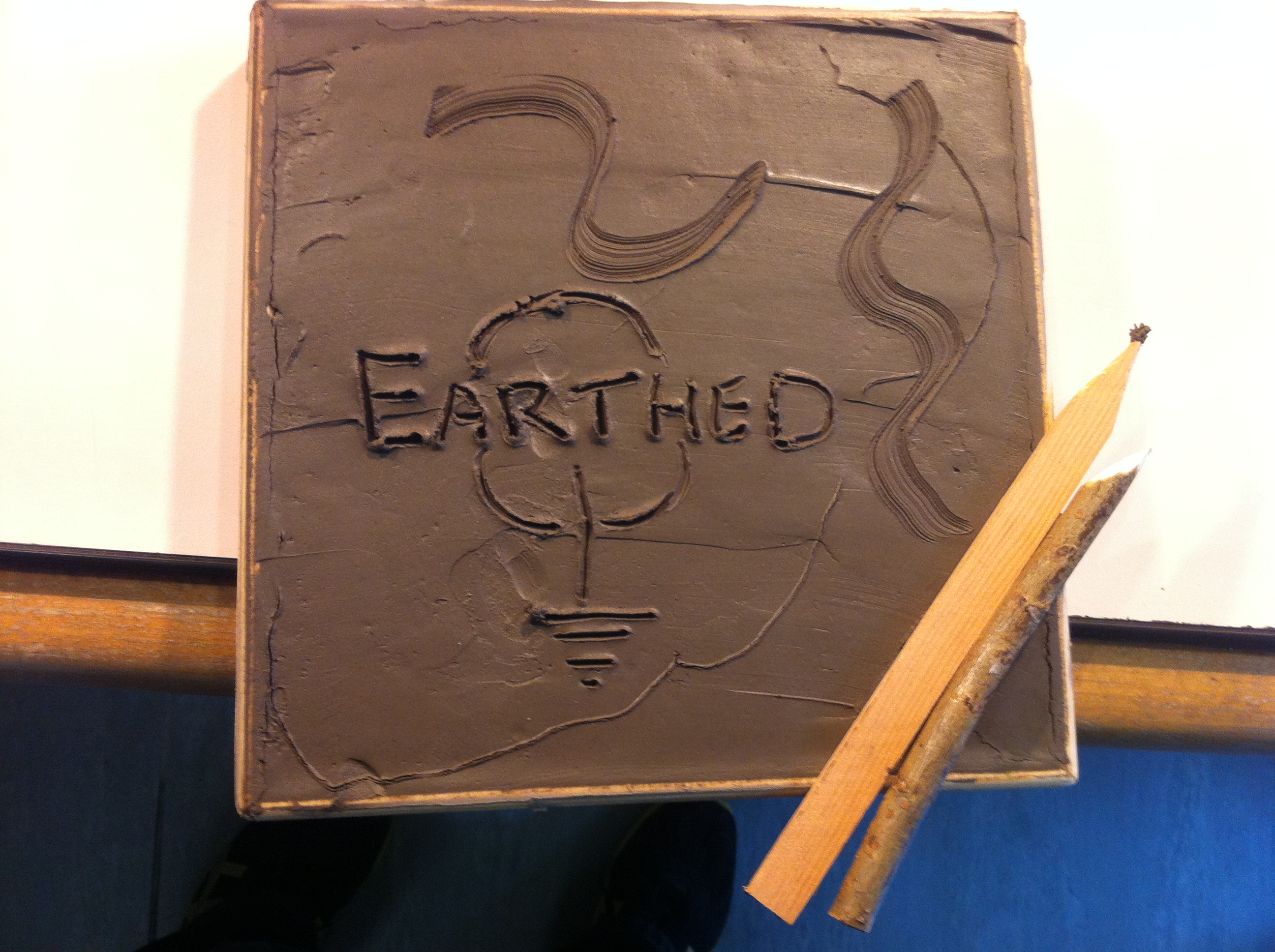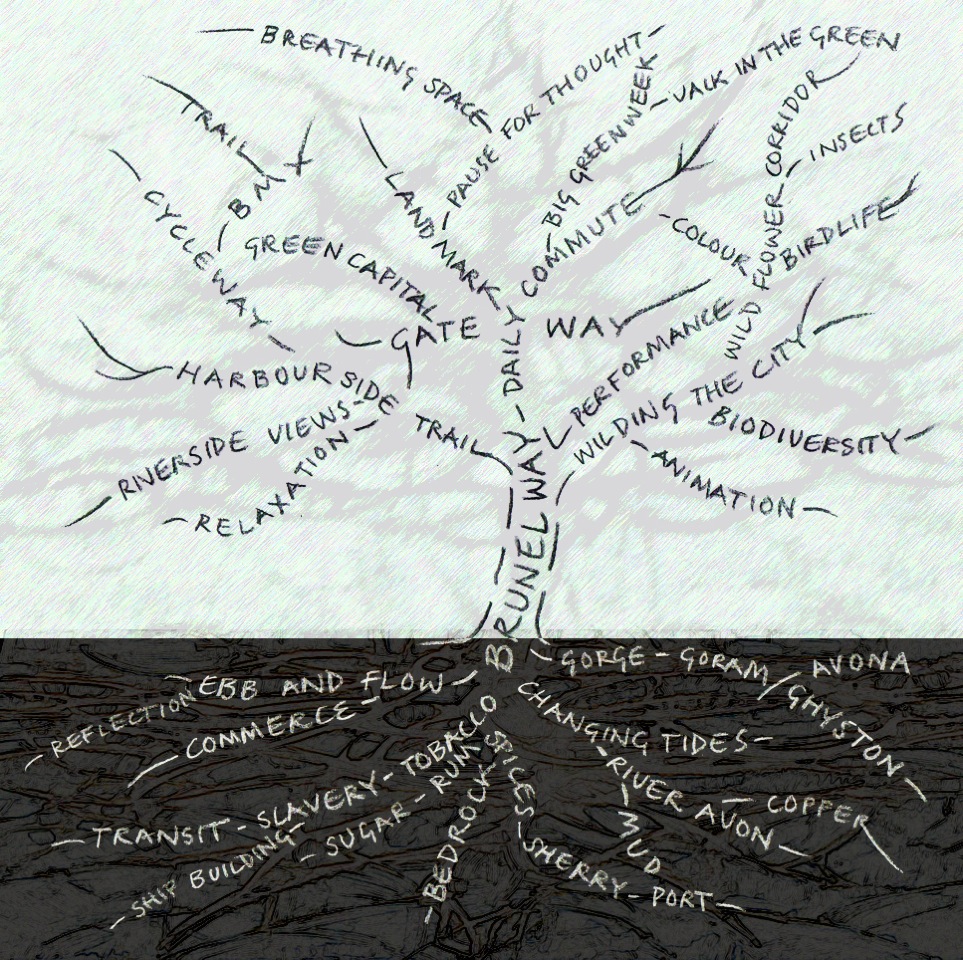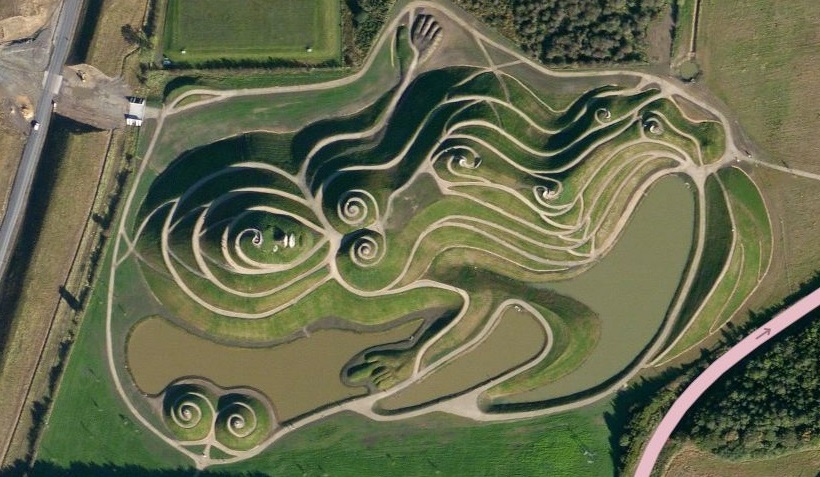Welcome Back!
Thanks for visiting the Viewing Chamber again and welcome to the third digest from The Engine House, Part Exchange Co’s vibrant research and development project exploring site-specific, interdisciplinary theatre with writers at its heart.
The Viewing Chamber is your window on the artists working across the seed ideas of The Engine House: a gathering place for their reflections, notes, images, wonderings and work-in-progress.
But before you take a tour of the inspirational content, why not take a look at the genesis of the seed ideas themselves – Earthed, Sentient City and Future Tourist – and find out where they began and why we thought they were ideas worth exploring.
The Viewing Chamber is also the home of David’s Digest, our three-monthly round-ups of work and an opportunity to connect together the diverse strands of the whole project. If you’re new to The Engine House you can see the bigger picture by reading the previous digests hereand here.
Reviewing the Terrain
Last time around we explored language, audiences and connections and identified some fantastic patterns across all three seed ideas, asking what it might mean to learn an interdisciplinary performance language, and exactly how audiences might ‘read’ a theatre performance taking place in a site with which they already have a deep connection.
Writer Anita Sullivan and creative technologist Tim Kindberg considered the expectations of audience and artist on Future Tourist, audio-visual artist Tom Lumens and Tracy Harris were working out how to make a building speak in Sentient City, and land artist Mick Petts, Part Exchange Co’s artistic director Rachel Aspinwall and myself were considering desire lines across landscape and how the attrition of the elements might guide our reading of land sculptures and the making of Earthed.
Children follow their desires in a mown maze
Future Tourist and Sentient City’s research periods have now reached a resting point prior to their full development as productions – so in this digest, we’ll be using Tom Lumens and Tracy Harris’ reflections on their Sentient City process to show how artists’ experiences in one seed idea have been mirrored by practical choices in another.
In fact, we’re particularly excited because this third digest is therefore not only looking back at the work of our artists, but also into the future as…
EARTHED Goes Public!
The Create centre in Bristol is hosting a five-day R&D residency of participatory engagement for Earthed from 14 – 18 June, kicking off with The Earthed Weekender on 14 and 15 June.
Using the Ashton Meadows site opposite Create as a huge green sketchbook, this residency will be offering talks, workshops and other activities to help explore the city’s relationship with its green spaces and unearth the stories embedded within it.
Ashton Meadows, wrapped by the Brunel Way overpass
For the artists it will also be examining the potential for collaborative processes between land artist and writer, using public access hands-on workshops to experiment with diverse approaches. The results of all this activity will be displayed within an evolving exhibition in Create curated by visual artist Mel Shearsmith.
The exhibition will, firstly, help artists and the general public identify the patterns, connections and illuminations being unearthed across the residency and, secondly, inform the content and structure of a new piece of storytelling for Bristol’s green spaces in 2015.
It’s an incredibly exciting time for the project so click here to find out how to join usand contribute your thoughts, stories and creativity!
We touched on engagement in the last digest, exploring how audiences might perceive particular performances if they had a pre-existing relationship with a public site. So before we launch a huge public participatory event, we thought it would be useful to look at how it’s been shaped specifically to support the artists alongside engaging communities, and why – when it works best – one is serving the other in a mutual act of creativity.
Why Engagement Matters
Over the last year the sites in which our seed ideas have been developing – the city of Bristol, the old Coroner’s Court, the natural landscape – have emerged as constant forces in the creative process, but in particular via the communities and cultural contexts that surround them.
The stories embedded in a place help shape the artists’ creative choices – from selection of content to creation of structure – throwing up new challenges and questions as each different layer of history (physical, social, geographical, geological, political…) is revealed.
You can see an example of this in the sample collaboration between audio-visual artist Tom Lumens and writer Tracy Harris and the commentary in the second digest.
One of the tasks of these digests is to identify commonalities, patterns and learning regarding interdisciplinary work across The Engine House. With the artists’ research and development time now spent on both Sentient City and Future Tourist, it’s clear that as Earthed marches on into the public sphere at Create, it can borrow from what’s been learned on the other seed ideas about how to simultaneously research content and process.
In early March, Tom and Tracy came to the end of their research and development period onSentient City – a project seeking to animate one of Bristol’s forgotten buildings – and they shared their thoughts on the process so far and how it might translate into their collaboration on a feature-length piece of new work. You can see the full set of reflections on the Viewing Chamber.
Some of their observations about engagement with a site’s past and present communities – especially how they offer up holding structures for diverse content – dovetail closely with the exhibition framework for our Create residency for Earthed.
So how can researching the content and process for a new piece of theatre happen simultaneously, as well as being made visible not just for artists, but the public too?
Finding a Structure for Creative Research
Tracy commented on the fluidity and rapidity of discovery during a creative process, which changed not only the amount and variety of content, but also the structures that sought to hold them together – and the resultant need for different performance languages to step forwards and backwards in response:
‘It feels fresh and exciting and we are constantly uncovering new material and changing responses… sometimes audio and visual speak for themselves and don’t need words, and similarly words can really help put things in context or bridge gaps or just stand alone and still be punchy and powerful.’
From his perspective Tom had a similar experience, recognising the energy and dynamic of re-arranging and re-visiting choices in rapid succession:
‘We were definitely sparking off each other’s process to structure the content, and create new bits or find new material to fit and strengthen the others. Also knowing when to give room to take other elements away became important.’
The combination of different artistic sensibilities also established specific roles. Tracy’s ability as a writer to quickly translate site research into the spine of a piece provided options for a narrative pattern: journeying through the life of the building with it speaking to us directly; a eulogy presented by others for a building whose identity is lost, or perhaps a building constructing itself a new identity from scratch.
Tom Lumens shares a visual representation of his creative process
In comparison, Tom’s ability as audio-visual artist to improvise soundscapes, visual metaphors and thematic loops provided visceral moments of audio or striking images that might punctuate, collide with, harmonise or develop that through-line provided from Tracy, thus forming a bigger piece that had its own internal dynamic.
‘The thematic mash-up of audio-visual content coupled with Tracy creatively choosing elements and researching things really shone a light on what could be a powerful platform for engaging people.’
Engagement in this context becomes a much more dynamic word, describing not just a way to pull in people’s general interest or pay lip-service to ‘participation’, but a way to make their lives and their histories part of the piece itself. He continues:
‘A lot of the artistic and I think more engaging responses to the building came from the researching of the wider cultural contexts, songs, poetry, speeches, and then using these as influences to direct the content and the structure.’
Making a Template
Both artists also refer to the possible generation of a ‘template’: a process that you could begin applying to any site, and which might allow it to reveal itself more thoroughly and dynamically to the artists.
The notion of applying a template during a process of creative research, helping both generate and organise the site’s findings is reflected in the Earthed residency’s use of an exhibition. As well as taking visitors on a supported journey through the project’s inspirations, it will offer areas that can hold content relating to the earth and rocks, water, flora, fauna and people who have shaped the land on Ashton Meadows – content that will be generated by the activities taking place during the residency.
These areas replicate the strata of the landscape in cross-section, working up from the bedrock to the humans who live on top of the land. It creates a template which relates to the site, is useful to the process, organises the research with a light touch but also allows unexpected connections – engagements across a diverse set of material – to reveal themselves, from geology to human behaviour.
Two Million Years of Ashton Meadows: referenced from British Geological Survey
The trickier task is then transforming them into theatrical experiences, but as noted above it may well be here that the writers’ structural eye and the visual artists’ sensibility for image begin to complement one another. And, more importantly than that, the template offered via the exhibition might allow the visual artist to identify the narratives and the writer to recognise the potential images, deepening their understanding of one another’s artistic languages.
Tom on Sentient City again:
‘Music is much more key in driving the flow and pace of the performance: ambient soundscapes will only hold attention for so long, and the movement and repetition of visual content needs much more variation.’
There’s the opportunity within interdisciplinary work to push what each artist provides – structure or moments, text or image – into places where it can operate differently, perhaps assuming functions we might expect of other performance languages.
It’s one of the techniques Mick Petts and I hope to employ during the Earthed residency: I’d like to spend some time responding through sketch and image and he’d like to spend some time responding through writing and story.
Clay tile and writing materials, formed by river mud and wood from Ashton Meadows
Developing new performance languages has already been discussed in more detail in David’s Digest #2, but what’s exciting about the Earthed residency is that it recognises this possibility by beginning to make the options visible: the exhibition is overtly transforming a site’s context and history into a living three-dimensional template of possibilities.
It’s possible to connect this idea of template back to the Sentient City reflections again, and Tom’s introduction of graphic scoring (see Digest #2 above for more on this) as a guide:
‘The first three days ended with a big open discussion about the structuring process. It still felt very big and open at this point, but the idea of graphic scoring came into it and this seemed to help with giving a possible method of layering and directing the content. It was good then to each be able to go away and think about it all and be free to gather content, research and collate something to bring back the following week.’
As a final comment and bridge back to the Earthed residency and its qualities as a living process, this need for time and space – engagement with one’s self away from the content, allowing time to see things settle – has also been built in to the rhythm of engagement in the residency process.
Day-by-day the exhibition will shift and change, and at the end of each day time and space is offered to the artists to record their most memorable responses, captured in a growing record of impressions and inspirations projected in the Create cinema space.
Similarly the end of the exhibition route for the public is a tree that will start empty, but become gradually populated with leaves consolidating their experience of the project into a sentence or two. They’re welcome to come back and view it at a later stage too to see how it’s changed, and I hope they will.
Whilst a longer period of time may be required to digest the whole residency, this short-term filtering may help us form templates and structures, allowing us to identify patterns that could organise the final creation of land-art-and-story: the moment towards which Earthed is ultimately leading.
Inspiration from Northumberlandia: 1.5 million tonnes of rock, clay and soil, 100 feet high and a quarter of a mile long
It’s satisfying to see the interdisciplinary processes within The Engine House beginning to inform one another, rather than just sitting in isolation. The project is one enquiry after all – spread across many seed ideas, some still dormant and waiting to emerge – but already something resembling a distinct overall practice is beginning to present itself.
Our aim is to make some of this learning practically available to other artists, so make sure you check out our accompanying Tool Kit #3 for this digest, outlining some suggestions about structuring research and finding your process.
After all this analysis of process and its varied benefits however, Tracy Harris finishes her reflections on Sentient City with a more fundamental question that applies to all The Engine House seed ideas.
As we approach the end of The Engine House’s first year, it seems fitting to conclude with it, as it’s perhaps the question we hope will be answered by the residency itself: not just how we stories in this way, but:
‘Why are we telling this particular story?’
The Engine House: Our First Year
To complete this final digest for the year I turned to artistic director of The Engine House andPart Exchange Co Rachel Aspinwall, to ask her to reflect on her role and the work of the artists so far on the project.
Which areas of The Engine House’s activity have you been focusing on most and why?
I found myself focusing on the seed ideas that gave me most opportunity to be an artistic director rather than a creative producer. Having spent nearly a year developing the ideas, support and partnerships for The Engine House, then once the funding was successful needing to spend another three months setting up all the structures including the website and bringing on board key people, I was instinctively drawn to Earthed, Future Tourist and Sentient City.
These were the seed ideas with artists attached with whom I was very excited to work, as well as offering the opportunity of bringing in new artists from the region. This just felt like having a big field to run around in after so long on the producing treadmill – pardon my mixed metaphors!
How have artists coped with the challenges of collaborating with one another and on site-specific work?
Firstly, I wouldn’t necessarily describe the work we have been focusing on this last year as site-specific especially. Its unifying factor is more that it’s been cross disciplinary and always writers collaborating with artists from another discipline – in these cases, land artist, visual artist and creative technologist.
All of those artists were very up for collaborating with each other from the start or they wouldn’t have been there so the desire was strong which is pretty crucial, as collaborating across artistic disciplines is easier to say than do. It can make people feel insecure, lost, frustrated, anxious. I’m not selling it as an approach am I!
But when the discoveries come for a new way of doing or saying something, a surprising or exciting revelation, and you feel like you are treading entirely new ground together then it’s worth it. I would say all the processes this last year have had equal amounts of both. My favourite saying of this last year was Tim Kindberg’s ‘nothing much ever came of a reasonable expectation‘.
What’s the structure for development of work in The Engine House – and do you feel it’s working?
It’s an entirely responsive structure as each idea is so different and requires such different routes, much of which is not foreseeable until you start. All the seed ideas we worked on this year have been given initial very open development time.
Artists and the idea in a space, park, walk together, coupled by producing time exploring how, what, where and with whom. Earthed has worked very differently to the other two, which were given quite intensive blocks of time, mainly because the partnership side of things came quite quickly as a result of a lot of interest in the initial idea.
Mick, David and I had barely had time to spend a day developing ideas before I was needing to present the project at a fairly high level. It was a bit of trapeze act for a while with the interest in the act running ahead of the readiness of the trapeze artists. We’ve now caught up thankfully and Earthed is about to kick off with its first big bit of public development for the event in 2015.
In terms of how it’s working as a whole, it’s a good question. The responsive structure works well for the artistic side of things but there’s no doubt that I could do with an associate producer working with me to help take things forward on that front.
If an idea has taken off and needs focused time – which is what has happened with Earthed – I just simply don’t have enough time to follow up on all the leads and possibilities that are there with the other seed ideas, which means they have to go into a kind of creative slumber in the meantime. It’s not ideal and it’s one of the areas I want to find a solution for in the coming year.
The Engine House gives artists the chance to reflect on their process and ideas – has this helped inform their work?
What I have observed is that it’s really important to find the right approach for capturing reflections. Not everyone wants to write something, or respond to pre-set questions. Some people can’t necessarily express things in words, or don’t want to be filmed whilst they try to express themselves – that last I completely relate to myself!
Perhaps I am answering a different question on whether the way we have asked people to reflect has been successful (!) to which I would reply only partially. If being asked to reflect has helped inform the artists’ work, well that’s a question for them.
How has the Viewing Chamber and the digests influenced your understanding of The Engine House’s achievements this year?
The three monthly reflections have been incredibly useful and insightful. It’s helped me see the value of everything we have done both in itself and within the wider artistic context and recorded it for others to see as well.
We have now got a really fantastic vibrant record of our activity for this past year that I think stands up on its own as a piece of writing about creative process and exploration, and I think other artists interested in collaborative working would find useful and interesting – and which I will most definitely be referring to when considering the year to come.
What developments do you hope to oversee in the next year of the project?
This next stage of the Engine House will see the next three seed ideas being given the opportunity to flourish. They are all umbrellas for the creation of new work and will give many more artists the opportunity to work in these ways if they so wish.
We will be seeking partnerships with venues and producing bodies to enable them to happen. We intend to run some public-facing workshops and events that share and present the learning from the processes we have been going through. I hope to see at least one of the seed ideas fully produced, and perhaps find a real engine house somewhere in the city to set up a new work development centre focusing on this sort of work…
Many thanks to Rachel for her time and don’t forget to take a look at the last year of The Engine House on the Viewing Chamber – and of course join us on Ashton Meadows on the 14th and 15th June for the Big Green Week Earthed Weekender!
